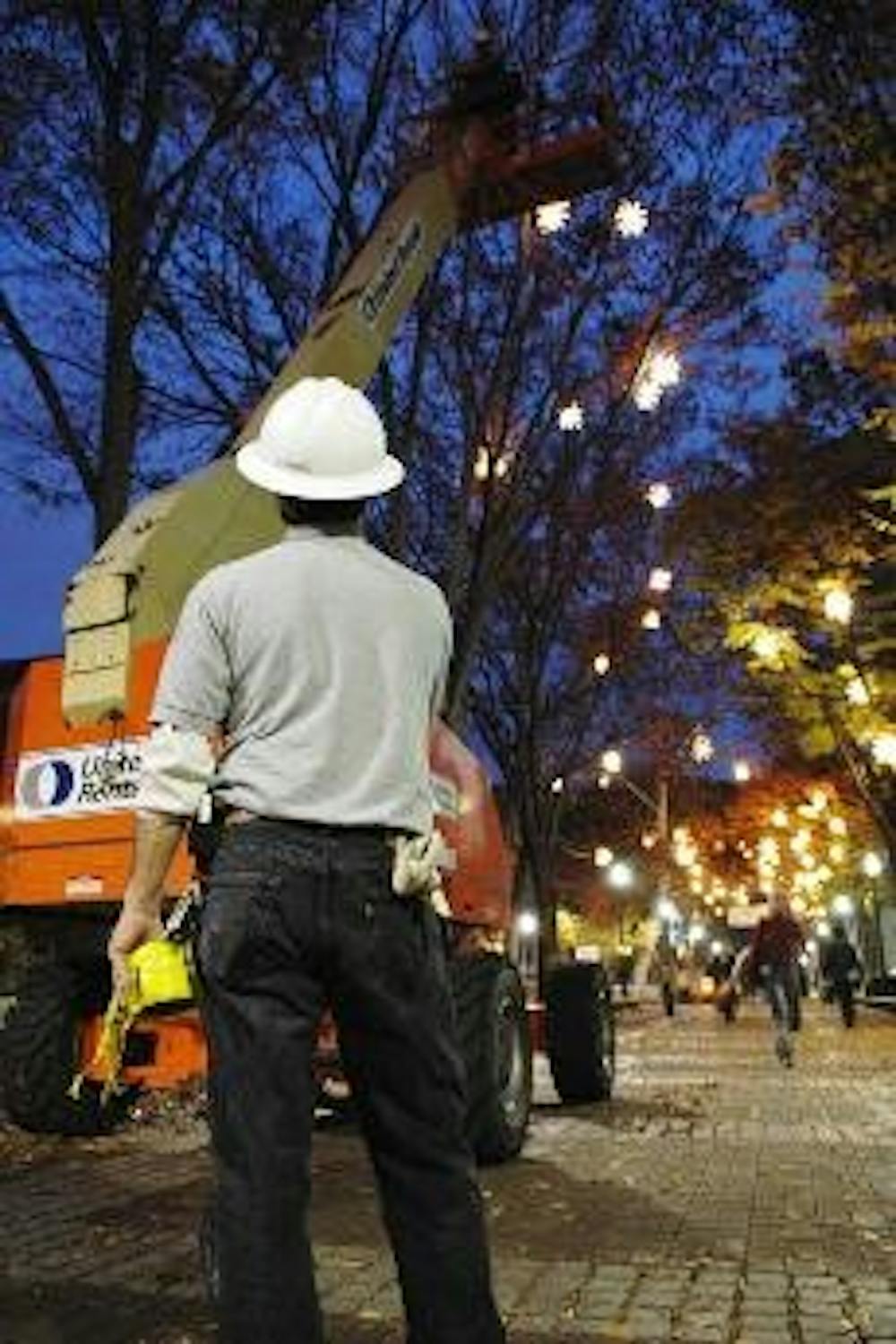When asked about the snowflake lanterns that line the tops of trees on Locust Walk, College sophomore Jordan Cohen's face lights up.
"They're pretty awesome," Cohen said, gazing at one just above his head.
Cohen recalled how last winter, "even when it didn't snow, they still added a nice holiday season feel to Locust."
Now in their fifth year, the snowflakes have become somewhat of a tradition, marking the holiday season and adding a pleasant nighttime glow to the already picturesque Locust Walk.
But Penn's love affair with holiday lights hasn't always taken the shape of a snowflake.
For many years, the University wrapped Christmas lights around the trunks of the trees, said Debbie Gillespie, a University landscape planner.
Eventually the University realized that this was "strangling" the trees, Gillespie said, because the lights were wrapped so tightly. She added that the lights were also difficult to take down, and would stay up for years at a time.
So in 2002, the University hired the Beam Ltd. consulting group to come up with other ideas, Gillespie said.
Penn's senior facilities planner Dan Garofalo credits the snowflake idea to a Beam consultant, although he says other ideas were also considered.
One such proposal was to project holiday images onto buildings along the Walk. Penn nixed the idea, Garofalo said, because it didn't seem right to "project Frosty the Snowman in" the windows of the Penn staff and students who worked and lived there.
Today, Gillespie said each of the 60 trees on Locust gets around five snowflakes. The snowflakes come in three sizes - 18, 24 and 36 inches.
University maintenance workers finished installing the nearly 300 snowflakes last Friday, and the lights will be on every night by the Monday after Thanksgiving, Garofalo said.
And the price for spreading holiday cheer on campus? Relatively cheap.
The cost of materials ranges from around $25 for smaller snowflakes to $60 for larger ones. Penn maintenance workers piece together Christmas lights and wire to make each snowflake.
"They're pretty fragile," Gillespie said.
When maintenance staff pack up the snowflakes, they don't always have the time to make sure each one is put away "so that they last," she added. Therefore, only about half are reused each year.
Once they're up, workers don't take them down until spring break - even if the snowflakes go dark - eliminating any further maintenance costs.
Whatever the amount, though, the University considers the money well-spent.
"I love them," Garofalo said. "It's one of the few things that we do now in [Facilities] that's universally approved of."
Gillespie said the lights are the winter element of the University's seasonal decorations. She compared it to the nearly 10,000 flowers the University plants each year to bloom for the spring.
Wharton freshman Bryon Wolf, a California native, is excited not only to see snow for the first time, but also to see the snowflakes.
"I've seen pictures," he said. "I've heard its really nice in the snow."
For Wolf, more lights also means more safety.
"The brighter it is, the safer it is," he said.
Cohen agreed with Wolf.
"I can't imagine someone getting robbed under snowflake lights," he said.



